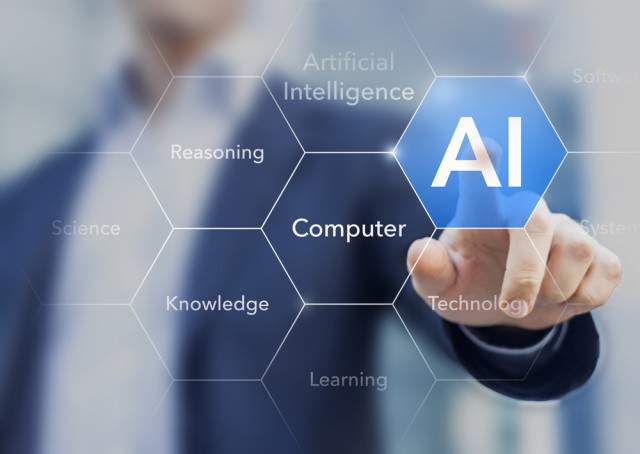How real-time AI can help make decisions throughout the customer journey

When it comes to making quick, real-time business decisions, Artificial Intelligence (AI) has proven to be a vital component of any effective business strategy. This is reflected in statistics showing how AI implementation jumped from 48 percent in 2018 to 72 percent in 2019. As technology continues to improve, no doubt this number will continue to increase with AI becoming an even larger asset to improve your operational capacity.
If utilized correctly, real-time AI has the ability to vastly improve real-time decisions for companies throughout the customer journey – from acquisition through to customer service and customer retention.
Changing from reactive to proactive
How companies have approached customer acquisition and engagement in the past is quickly becoming obsolete. Traditional channels -- newspapers, billboards, television -- can work for brand-building but do little for direct customer acquisition.
Since the 2000s, digital channels have become the main platforms for customer acquisition, service, and retention. However, in most cases, the process is still reactive -- digital channels help find only the customers who have already expressed an interest in a product or reached out for service regarding the product.
Nonetheless, marketing has become more expensive and customer acquisition costs have risen by 50 percent over the last five years alone. In the dynamic era of e-commerce, businesses have to do more to successfully acquire customers.
Unlike earlier strategies, your customer acquisition in 2020 needs to be proactive and targeted.
Targeted customer acquisition and personalized engagement
AI can create a target audience by using data science, applying machine learning, and automating tasks at scale. Likewise, the cycle can predict the behavior of a person within the next six months based on their profile and activity. It can then recommend products, services or actions.
By pairing data with a targeted persona (using algorithms to view historical data and identifying what the trigger point is for that person), you can create a targeted list of customers who fit the purchase persona. You can then execute a campaign, personalized to each person’s preferences and needs.
In fact, AI has proven to be extremely useful for generating high-quality leads. According to a study by Aberdeen Group, 61 percent of respondents say improved lead generation is a primary reason to invest in AI.
For example, you can use data to gather 500 potential gym members from your target neighborhood of 10,000 and reach out to them with tailored messaging appropriate to their persona. The results are then fed back into the machine; essentially, which results were predicted well, and which weren’t. Consequently, AI gathers insights from the data and the next prediction cycle becomes more accurate.
Customer service and experience
Real-time insights from AI can be used to provide proactive and intelligent customer service at various touchpoints in the customer journey, from interest and intent to purchase and ownership. AI-driven customer service can be used to increase the customer experience and create an engaged customer. Some examples:
- AI can enable finding faster, more intuitive answers to customers' questions by understanding the intent, emotion, and customer needs-- like having a Google for your customer self-service and agents to intelligently service the customers.
- Though the experience of most of the current chatbots or virtual assistants leaves a lot to be desired, they have the potential to shorten customer response times while maintaining customer satisfaction. Chatbots can also be personalized to communicate with different customer groups, analyze customer data, and tailor products to users.
- The power of AI lies in its ability to make sense of large, disparate datasets and provide predictions and recommendations for every customer interaction, thus enabling personalized customer interaction and stronger engagement.
- We’ve all seen the power of predictive decision making with our online shopping experiences, where platforms have extremely accurate predictions on what other products may interest you. Customer service team members can have similar predictive decision-making support to provide recommendations on similar products customers may be interested in.
- With more connected devices coming on board, there’s great potential for customer service to be proactive. For example, a connected dryer may reach out to a customer about a proactive maintenance requirement based on feedback from similar products that are reporting problems after a specific drying cycle.
Customer retention and loyalty
While marketing budgets are typically focused on customer acquisition and brand building, investments in customer retention and loyalty can give big returns. The cost of bringing in a new customer can be 25 times more expensive than having an existing customer make another purchase.
Similarly, increased customer retention margins have a significant effect on profits. By increasing your customer retention rates only five percent, your revenue can go up anywhere between 25 to 95 percent. Nurturing current customers is therefore vital to both revenues and brand loyalty.
For example, while your average person may only buy a car every three to five years, car dealers have regular touchpoints with their customers throughout the ownership through their service department. Despite the gaps between purchase decisions, constant contact provides opportunities to engage customers and build loyalty. And these opportunities are plentiful for auto-dealers who average over 40,000 unique interactions with their customers every year. Ultimately, the ongoing engagement creates a repeat buyer and a referral channel.
Companies across a wide array of industries are increasingly seeing this opportunity. A survey by Algorithmia in 2019 revealed that 59 percent of large companies noted customer retention as their primary target when using machine learning technology.
It’s worth noting, however, that successful AI integration requires in-depth data analysis before AI is put to work. Your business should look at metrics around customer retention and revenue growth, then work backwards to pinpoint where AI is most needed -- this way, the results are maximized. The key also is identifying the step in your workflow in that intelligence needed and being able to provide it in real-time rather than in historical analytic reports.
Real-time AI and data-informed decisions
Real-time AI can help you make decisions throughout the customer journey. Whether focusing on customer acquisition, customer service or customer retention, the scope and accuracy of AI is excellent. Besides enabling businesses to earn promising leads, optimize customer service, and secure long-term customers, AI actually provides a deeper understanding of user behavior.
Crucially, this understanding is backed up by data that is continuously learning and improving. AI can therefore soundly anticipate user behavior and empower companies to cater to consumer needs before they even arise.
Real-time AI is even facilitating a new type of business: insights-driven businesses. These AI-equipped companies have a significant advantage when making core decisions around growth and strategy. Statistics from Forrester Research already show that insights-driven ventures, on average, grow at a 30 percent rate per year. Plus, these types of organizations are set to be worth $1.8 trillion by 2021.
Investing in AI solutions then is no longer a futuristic luxury but a necessity to stay informed and relevant in an increasingly data-filled world.
Photo Credit: NicoElNino/Shutterstock
Vikrant Pathak, is the CEO and chief data scientist for myautoIQ, an AI-powered auto customer engagement platform. Vikrant is passionate about using machine learning and data science for common business decision scenarios & creating real-time augmented intelligence capability, embedded in the business workflow. Before myautoIQ, Vikrant spent 20+ years in the industry, partnering with clients in Automotive, Information Services & Media, Marketing & Loyalty, and Financial Services domains to accelerate digital transformation, monetize data, and create disruptive capabilities.
is the CEO and chief data scientist for myautoIQ, an AI-powered auto customer engagement platform. Vikrant is passionate about using machine learning and data science for common business decision scenarios & creating real-time augmented intelligence capability, embedded in the business workflow. Before myautoIQ, Vikrant spent 20+ years in the industry, partnering with clients in Automotive, Information Services & Media, Marketing & Loyalty, and Financial Services domains to accelerate digital transformation, monetize data, and create disruptive capabilities.
